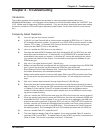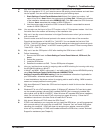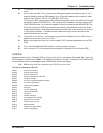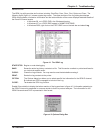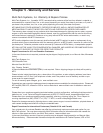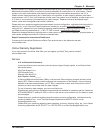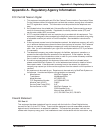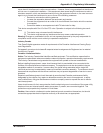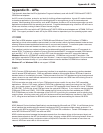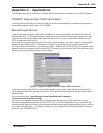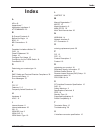
39
Appendix B - APIs
MT128ISA/PCI
Appendix B - APIs
This Appendix describes the APIs (Application Program Interfaces) used with the MT128ISA and MT128PCI
ISDN terminal adapters.
An API is a set of routines, protocols, and tools for building software applications. A good API makes it easier
to develop a application by providing all the building blocks for a programmer to use in the development
process. Most operating environments, such as MS-Windows, provide an API so that programmers can write
applications consistent with the operating environment. Programs developed using a common API will have a
similar user interface, making it easier to learn the new program.
The three basic APIs used with the MT128ISA and MT128PCI ISDN terminal adapters are VCOMM, CAPI and
NDIS. The support provided for each API by the ISDN drivers is dependent upon the operating system used.
VCOMM
Multi-Techs ISDN adapters support the VCOMM (Microsoft Windows Comm) API interface. VCOMM is
essentially a virtual communications port emulator (a virtual modem) which provides protected-mode services
allowing Windows-based applications and drivers to use ports and modems. To conserve system resources,
communications drivers are loaded into memory only when in use by applications.
This interface is similar to a modem interface and enables existing applications based on AT commands to
access ISDN. This feature is called the Comport Emulator and allows AT commands to enable ISDN features
such as HDLC, X.75, V.120, or Async to Sync PPP (note this emulation does NOT support fax features).
Windows 98 have the VCOMM API enabled automatically. VCOMM can only provide AT-emulation if the
application requests its COM port services from Windows. It cannot support the application if it tries to access
the COM port hardware directly or if your software does not use the standard VCOMM driver interface.
Windows NT and Windows 2000 do not support VCOMM.
CAPI
CAPI (Common ISDN Application Programming Interface) is an application programming interface standard
used to access ISDN equipment. When an application wants to communicate with an ISDN card it sends a
standard series of commands to the card. These commands form the CAPI standard and give developers and
users a chance to use a well-defined mechanism for communications over ISDN lines without being forced to
adjust to hardware idiosyncrasies.
CAPI drivers take over total control of your COM port and act as a switch for any other CAPI compatible
applications. While in CAPI mode, instead of DUN (Dial-up Networking) opening and using the real COM
port, your system uses a virtual COM port. A common CAPI application which creates this virtual COM port
is RVS-COM. To DUN, this virtual COM port looks like a physical COM port. If your machine has two physical
COM ports (COM1 and COM2), RVS-COM creates the first virtual port as the next available port (COM3).
RVS-COM allows you to take full advantage of the CAPI API by providing for processes such as sending and
receiving faxes, receiving voice mail, using a full duplex sound card as a telephone, transferring files from PC
to PC, using terminal emulation for BBS and online systems as well as accessing the Internet via ISDN.
NDIS
NDIS (Network Device Interface Specification) was developed by Microsoft and 3COM. It is a Windows device
driver interface that enables a single network interface card (NIC) to support multiple network protocols. For
example, with NDIS a single NIC can support both TCP/IP and IPX connections. Certain ISDN adapters, such
as the MT128ISA and MT128PCI can also use NDIS.
NDIS includes a protocol manager that accepts requests from the network driver (at the transport layer) and
passes these requests to the NIC (at the data link layer), allowing multiple NDIS-conforming network drivers to
co-exist. In a situation where a computer contains multiple NICs because it is connected to more than one
network, NDIS can route traffic to the correct card.



